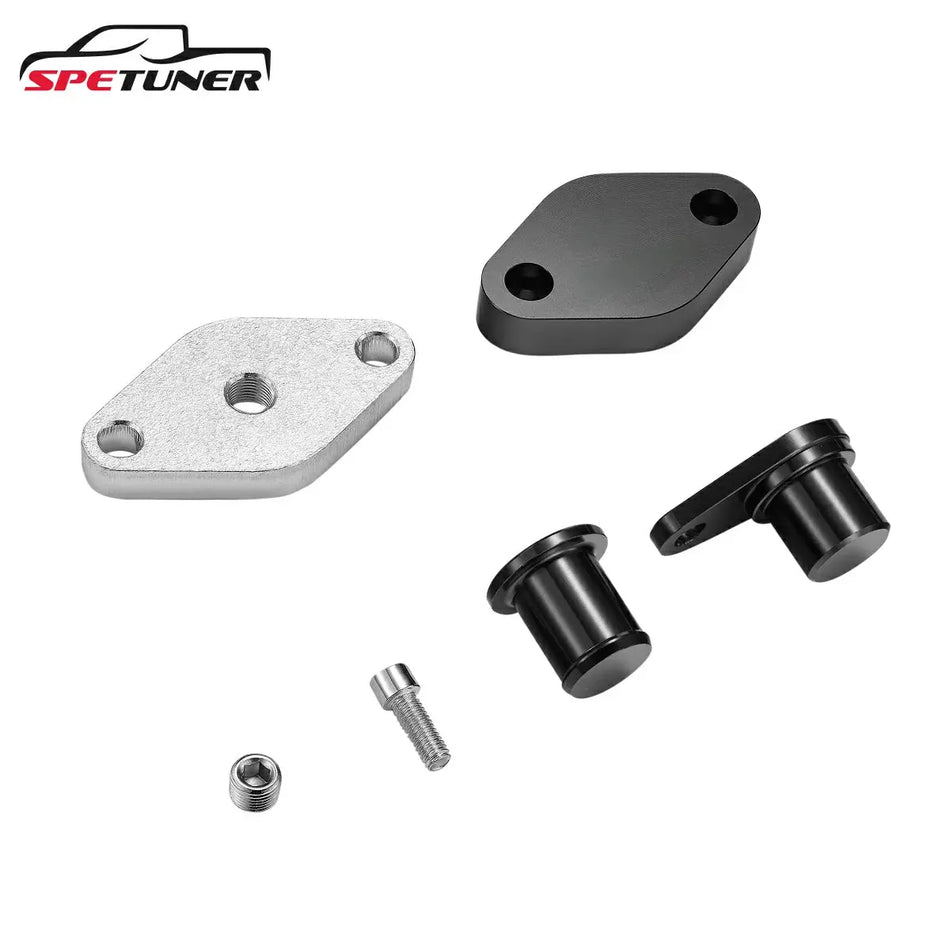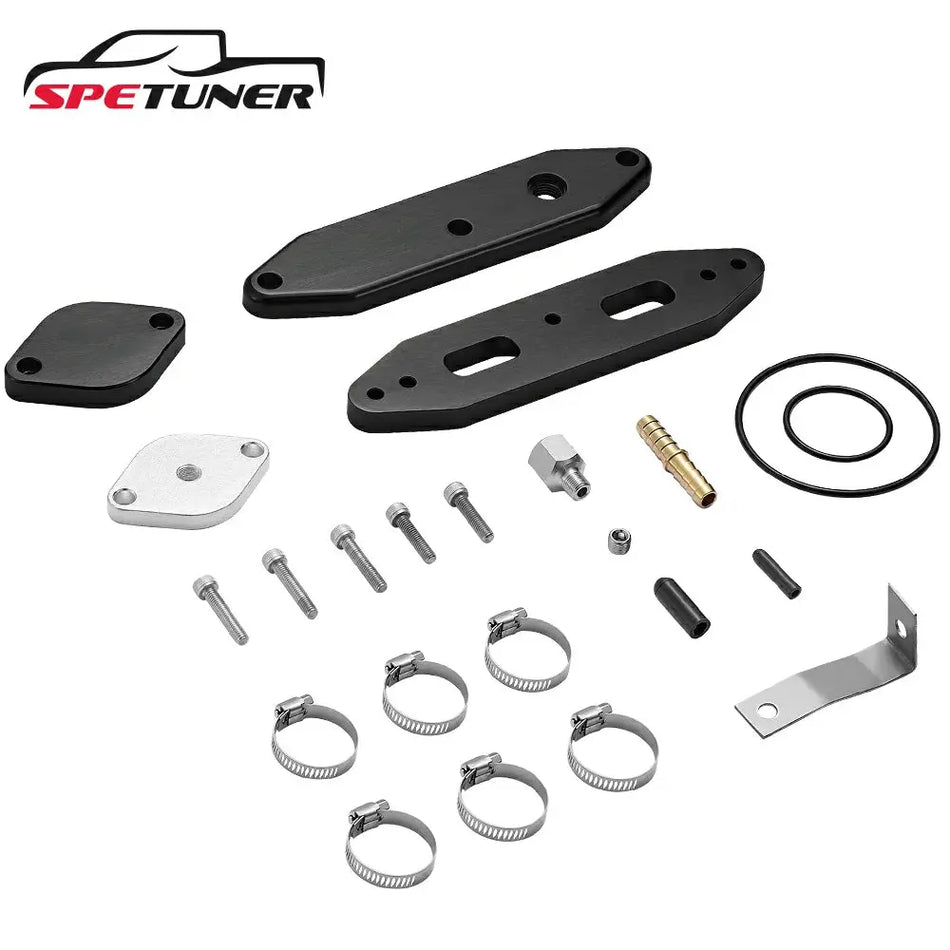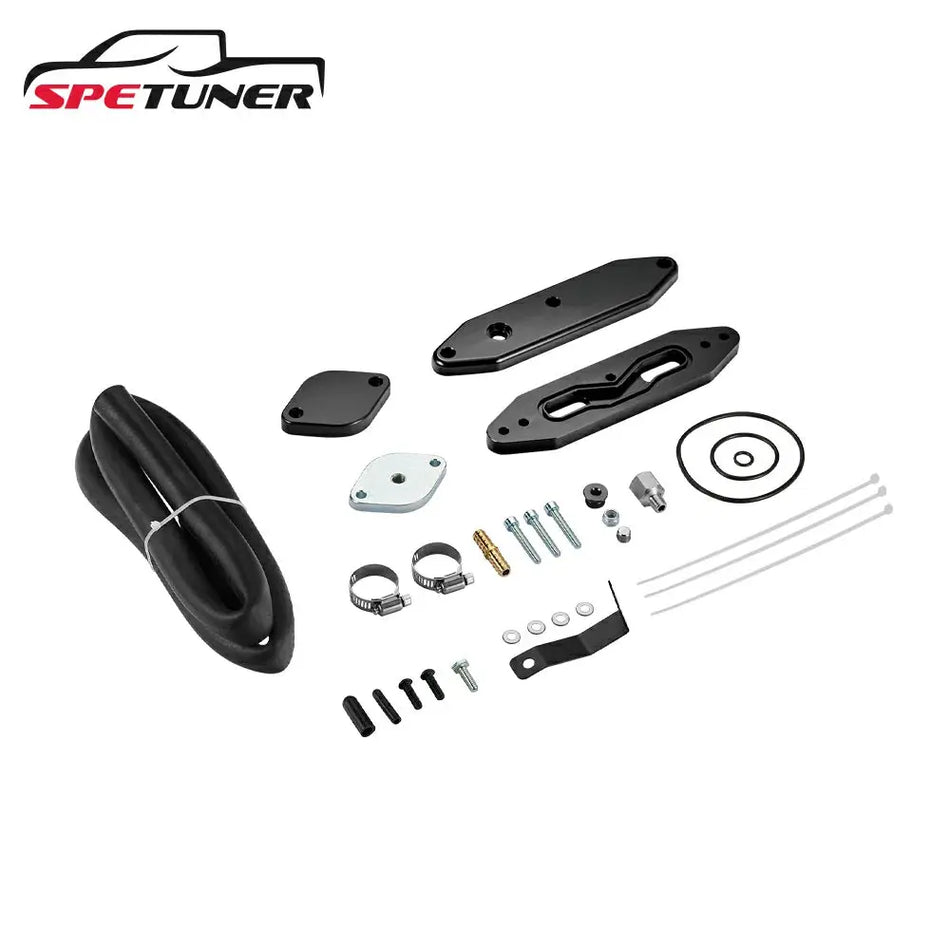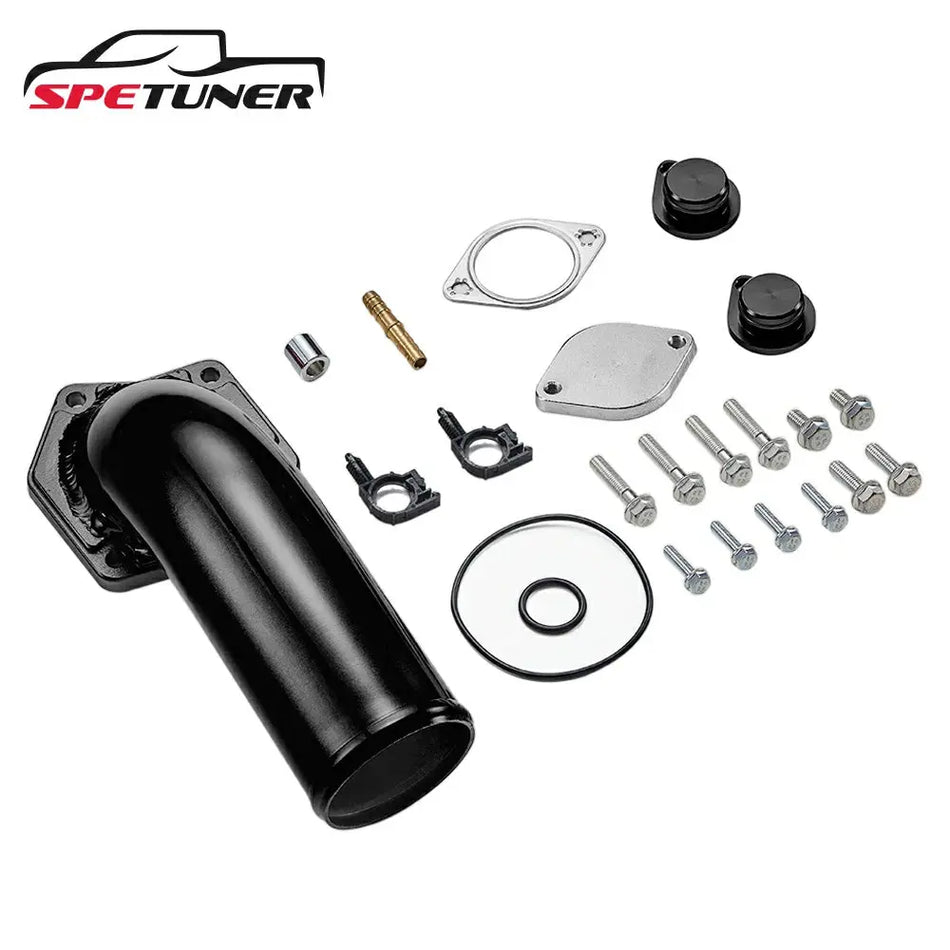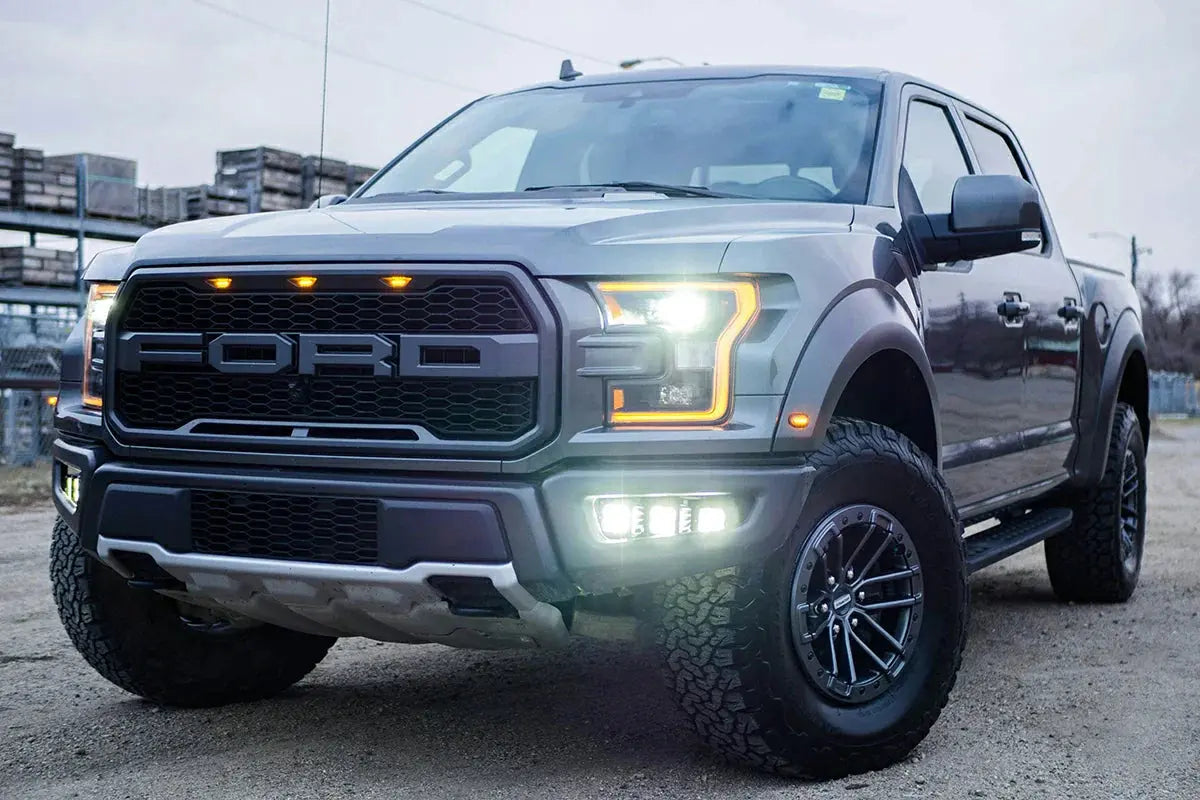Upgrading your truck’s exhaust system is a common modification among diesel enthusiasts looking to increase performance, improve sound, and gain efficiency. One of the most important components in any exhaust modification is the downpipe. In this article, we will explore what a downpipe is, how it affects performance and sound, and provide recommendations for choosing the best option for your truck.
What is a Downpipe Exhaust System?
Downpipe Definition
A downpipe is a key component in the exhaust system, connecting the turbocharger or exhaust manifold to the rest of the exhaust setup. Its primary job is to guide exhaust gases out of the engine and into the exhaust system.
While a stock downpipe is designed to meet emissions regulations and reduce costs, upgrading it to a larger, performance-oriented version can significantly improve airflow, reduce backpressure, and enhance overall engine performance. It's important to note that race pipes, often confused with downpipes, remove emissions control components like the catalytic converter or DPF, but they aren’t always the best choice for street-driven trucks.
Downpipe Functionality
The main function of the downpipe is to reduce exhaust flow resistance, allowing gases to exit the engine more quickly. A larger diameter downpipe ensures that exhaust gases flow with minimal restriction, which boosts engine efficiency, increases turbo spool time, and can lead to an increase in horsepower.
Upgrading to a performance downpipe is one of the most cost-effective ways to improve your truck’s performance, particularly in turbocharged diesel engines, as it allows the turbo to build boost more quickly.

Downpipe Exhaust System and Performance Enhancement
Improving Exhaust Flow and Engine Efficiency
When you replace a stock downpipe with a larger, performance-oriented version, you increase exhaust flow, which leads to improved engine efficiency. A more efficient exhaust system means the engine can expel gases more freely, leading to better turbocharger spool time, quicker acceleration, and more horsepower.
For performance-driven drivers, installing a larger downpipe is an excellent way to see noticeable performance gains without making major changes to the engine.
Downpipe Modifications and Emissions Control
Many performance downpipes come with the option to delete key emissions control systems, like the Diesel Particulate Filter (DPF) or Selective Catalytic Reduction (SCR). While this modification can increase horsepower and reduce backpressure, it’s important to be aware that removing emissions components can make your truck non-compliant with local emissions regulations.
Before opting for a downpipe modification that includes a DPF or SCR delete, it’s crucial to check local laws and regulations to avoid potential fines or legal issues. If emissions compliance is important to you, consider a downpipe that retains these components, while still offering performance benefits.
How a Downpipe Affects Exhaust Sound
Changes in Sound with a Downpipe
One of the most noticeable effects of installing a larger downpipe is the change in exhaust sound. As exhaust gases flow more freely through the system, the sound becomes louder and more aggressive. The increase in sound is most noticeable during acceleration and at higher RPMs.
If you’re after a more pronounced exhaust tone, upgrading to a larger downpipe will give your truck a deeper, throatier sound. This can be particularly appealing for those who want a louder exhaust but might not necessarily want to go the route of a full race pipe.
Interaction Between Downpipe and Other Exhaust Components
The downpipe plays a major role in your truck’s exhaust sound, but it’s not the only factor. Other components, like the muffler and resonators, help fine-tune the sound. If you install a large downpipe without proper tuning components, the result may be an overly loud or harsh sound. However, by using a muffler or resonators in conjunction with your downpipe, you can balance the tone while still improving performance.
If you're looking for a more refined exhaust note, a full exhaust system with a performance downpipe can provide the perfect balance of performance and sound.
Race Pipe vs Full Exhaust System: Sound and Performance Comparison
What is a Race Pipe?
A race pipe is an upgraded downpipe that removes emissions components like the catalytic converter and DPF. By eliminating these restrictions, a race pipe allows for maximum exhaust flow, leading to improved performance and more horsepower. However, it also results in a much louder and more aggressive exhaust tone.
If your goal is maximum performance and you're not concerned about emissions compliance, a race pipe is a great option. But for those who care about maintaining emissions standards, a full exhaust system that includes necessary components may be a better choice.
Race Pipe vs Full Exhaust System
A race pipe is designed primarily for performance, offering maximum airflow and horsepower gains. On the other hand, a full exhaust system provides a more balanced approach, including components like mufflers and resonators that help control sound while still improving flow.
For performance enthusiasts who want the most power, a race pipe might be the best option. However, for drivers who need a quieter ride or are concerned about emissions, a full exhaust system is often the better compromise.
Choosing the Right Downpipe Exhaust System
Material Choice and Impact on Performance and Sound
When selecting a downpipe, the material you choose can impact both performance and sound. Stainless steel is the most durable and commonly used material, offering both long-term reliability and a deep, rich exhaust tone. If you're looking for a lightweight material, aluminum is another option, though it may not be as durable over time.
Selecting the Right Downpipe Based on Your Needs
For performance-focused users, a larger downpipe is the way to go. However, if you need a quieter system for daily driving or need to meet emissions requirements, consider a full exhaust system or a downpipe that maintains emissions control components.
Recommended Product: SPETUNER Downpipe
For those looking to upgrade their truck’s exhaust system, the SPETUNER Downpipe is a great option. Known for its quality and performance benefits, the SPETUNER Downpipe offers improved exhaust flow, reduced backpressure, and increased horsepower. If you're serious about performance, check out the range of SPETUNER Downpipes available here.
FAQ
Q: What is a Downpipe?
A downpipe is a crucial part of the exhaust system that connects the turbocharger or manifold to the rest of the exhaust system. It helps guide exhaust gases out of the engine and plays a significant role in performance improvements.
Q: What Does a Downpipe Do?
A downpipe improves exhaust flow, reduces backpressure, and boosts engine efficiency. Upgrading to a performance downpipe can lead to a faster turbo spool, more horsepower, and better throttle response.
Q: How Does a Downpipe Affect Sound?
Replacing your stock downpipe with a performance version will result in a louder, deeper exhaust tone. The sound will be more aggressive, especially during acceleration and at higher RPMs.
Q: Should I Replace My Downpipe for Better Performance?
If you're looking to improve your truck’s performance, upgrading to a larger downpipe is a smart choice. It can reduce exhaust backpressure, allowing your engine to perform more efficiently and produce more power.
Conclusion
Upgrading your downpipe can significantly enhance your truck’s performance, sound, and driving experience. Whether you opt for a full exhaust system or a race pipe, choosing the right downpipe will help you unlock your truck’s full potential.


